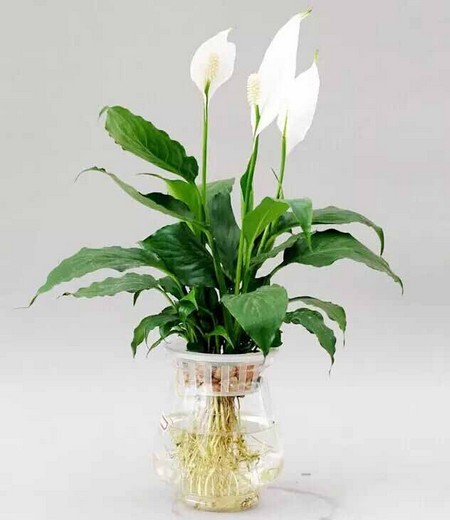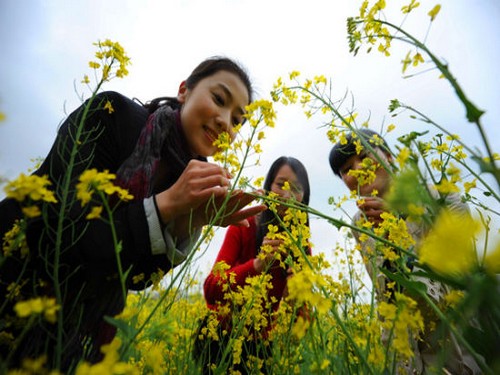Planting technique of Carpinus paniculata
Blue blossom, deciduous trees of the family Liriodendron, up to 15 meters high. Native to South America and Brazil, it has been introduced and cultivated in China for ornamental use in recent years. Is an ornamental, foliage, flowering tree species, tropical, warm subtropical areas widely planted as street trees, wood yellowish white to gray, soft and light, straight texture, easy processing, can be used as furniture wood. This species has both ornamental and economic value.
From late spring to early autumn, the leaves fall when they bloom. Capsule woody, ovoid, slightly flattened, light brown, ca. 5cm in diam., seeds small and winged. The wood is dark brown. It has a warm climate and should be planted in sunny places. The requirement of soil condition is not strict, and it can grow well in neutral and slightly acidic soil.

Methods of reproduction:
Cunninghamia lanceolata is propagated by sowing, cutting, tissue culture and other methods. The capsule matured in November, exposed or stacked in a windless place after harvest, dried and stored until March of the following year, and sowed when the temperature was around 20 ℃, but the seed germination rate was only about 5%. Cuttage propagation of Scutellaria paniculata can be carried out in both spring and autumn, and medium-mature branches are selected as cuttings with high rooting rate. The tissue culture of Dioscorea nipponensis is also easy. Some scientific research institutions in China have used the stem top and stem segments of seedlings as explants to propagate a large number of test-tube plantlets.
1. Sowing and reproduction: the fruit ripening period of the blueflower is in November. After picking, it should be exposed or stacked in a windless place, stored after drying, and sown in March of the following year. Because the blueflower originated in the tropics, sow seeds at a temperature of about 20 degrees when sowing.
2. Cuttage propagation: the cuttage propagation can be carried out in both spring and autumn, and medium-ripe branches should be selected as cuttings when cutting, so that the rooting rate is high.
Temperature and light:
Blue flower is native to tropical America. It likes warm, humid, sunny environment and is not resistant to frost and snow. The suitable growth temperature is 22 to 30 ℃. If the winter temperature is lower than 15 ℃, the growth will stagnate. If it is lower than 3 to 5 ℃, it will cause chilling injury. If the summer temperature is higher than 32 ℃, the growth will also be inhibited. If you like the light, you can withstand the half-yin.
Soil and fertilization:
For the fertile and moist sandy loam or loam, sufficient basal fertilizer should be applied when planting, topdressing once in spring and autumn after survival, pruning once in early spring every year, and heavy pruning should be applied to aging plants. When potted, it can be dried or grafted and dwarfed, and watering and nitrogen fertilizer can be controlled. Apply sufficient base fertilizer when planting, top dressing in spring and autumn after survival, control watering and application of nitrogen fertilizer. Fertilization combined with the use of photosynthetic nutrient film fertilizer can help absorb a large amount of light fertilizer, light energy, light, compatible with conventional fertilizers, nutrients for plant growth and development to the limit.
Pruning:
Once a year in early spring, aging plants need to be re-cut; when potted, they can be cut dry or grafted to dwarf; after pruning, tree protection generals are sprayed in time to destroy harmful bacteria to the source of maintenance, penetrate to eliminate the virus, and close the path of virus replication and transmission.
Pest control:
The disease of blue flower is less, and the insect pests are mainly longicorn beetles. if reddish-brown dung shavings are found at the base of the trunk, a knife can be used to pick up the bark cortex to catch larvae; before the occurrence of adults, a mixture of 10 parts of quicklime, 1 part of sulfur and salt can be applied below 80 cm of the trunk to prevent adults from spawning.
Time: 2019-05-25 Click:
- Prev

The hydroponic culture method of white palm and the cause of withering and yellowing of non-flowering leaves
Hydroponic white palm not only has the function of traditional flowers to enjoy flowers and leaves, but also has the unique advantages of clean and environmental protection, labor-saving and time-saving, simple maintenance, elegant style and strong appreciation, which can not only enjoy the beauty of flowers, but also enjoy the elegant demeanor of flower roots. It is very convenient to cultivate white palms in water.
- Next

Rape cauliflower planting technique
The origin of cauliflower is in Europe and Central Asia. Botanically it belongs to annual herb, Cruciferae. It is widely cultivated in China, especially in the Yangtze River Basin and other places in the south. Flowers blooming from winter to spring. Similar plants of sorrel. The color is bright and fragrant. Rape has a good ecological effect.
Related
- Fuxing push coffee new agricultural production and marketing class: lack of small-scale processing plants
- Jujube rice field leisure farm deep ploughing Yilan for five years to create a space for organic food and play
- Nongyu Farm-A trial of organic papaya for brave women with advanced technology
- Four points for attention in the prevention and control of diseases and insect pests of edible fungi
- How to add nutrient solution to Edible Fungi
- Is there any good way to control edible fungus mites?
- Open Inoculation Technology of Edible Fungi
- Is there any clever way to use fertilizer for edible fungus in winter?
- What agents are used to kill the pathogens of edible fungi in the mushroom shed?
- Rapid drying of Edible Fungi

